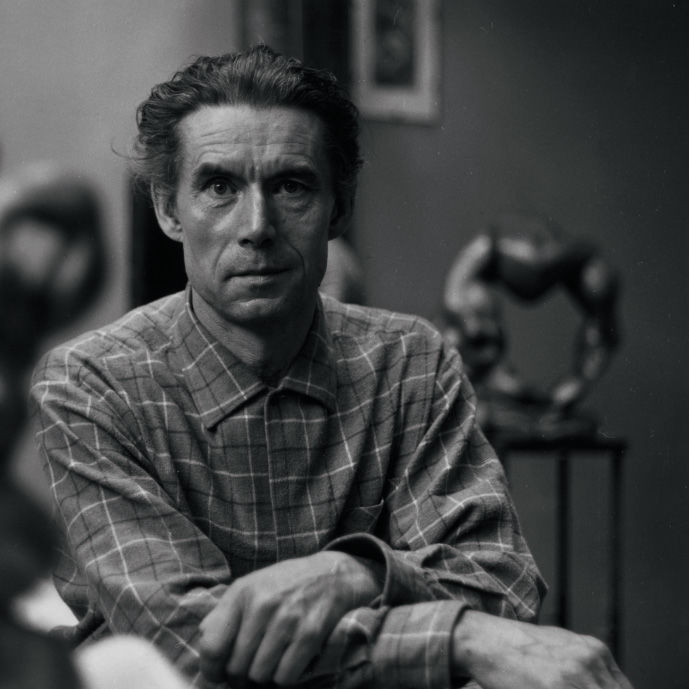Henri Delcambre (France, 1911-2003)
Henri Delcambre was born on December 17, 1911, in Marquise, a small town located between Calais and Boulogne, on the Pas-de-Calais. From his youth, Delcambre showed distinct artistic disposition and expressed the desire to fulfill them in sculpture. In 1935, he left the Société d’Exploitation Agricole des Mines de Lens and followed his lifelong dream. He left for Paris with a small severance to study at the Decorative Arts.
To improve his financial situation, he did what he called “odd jobs” without any connection either to his original training, or to the talents he wanted to develop. It was during this period that he met Jacqueline Vaffier who, herself a painter, would become his muse, model, companion and then his wife, until she died in 1996.
During the Second World War Henri Delcambre was mobilized into the African Cavalry in Algeria. After the war Delcambre settled in a small workshop and began his career in those very difficult times. His passion for sculpture was so strong that, even in this difficult period, he was happy to be able to express himself and fulfill himself as an artist. Always very discreet about his problems, he was beaming of joy as soon as he was at work in his studio.
He made his sculptures from loam, covering them with damp cloth between two working sessions to retain ductility.
After many exhibitions and his first sales, in particular, commissions from the State, he was able to move to a larger workshop on the ground floor, with beautiful light coming through a glass roof. He was then able to create large sculptures there.
For summer he escaped from Paris to Sète, the “barracks” of the painter Desnoyer, who became for him a privileged source of inspiration. Many of the names of his works come from the places he visited during that time.
After the death of his wife in 1996 he suffered terribly and not until many months later resumed his work. He worked in his studio until his death, 4 July 2003.
Thus, with perseverance and obstinacy, without ever deviating from the road he once had set for himself at an early age, he left behind a remarkable heritage, including more than three hundred sculptures, busts and bas-reliefs and a set of more than a thousand drawings in Indian ink.
